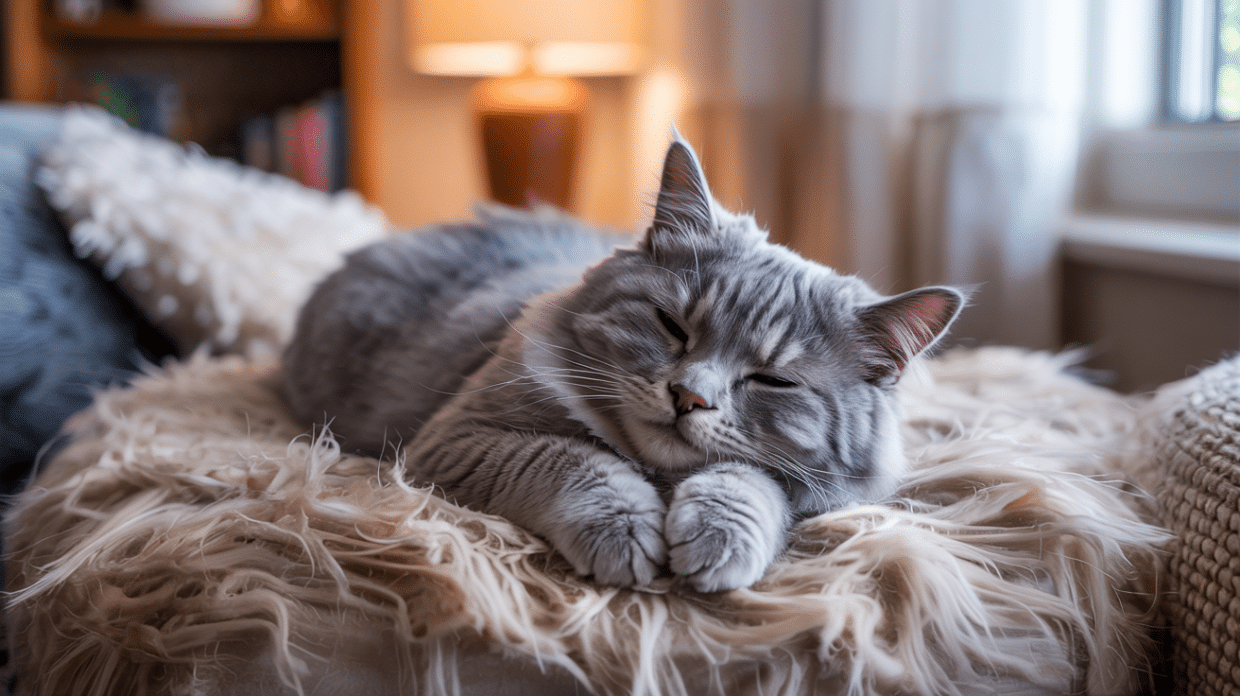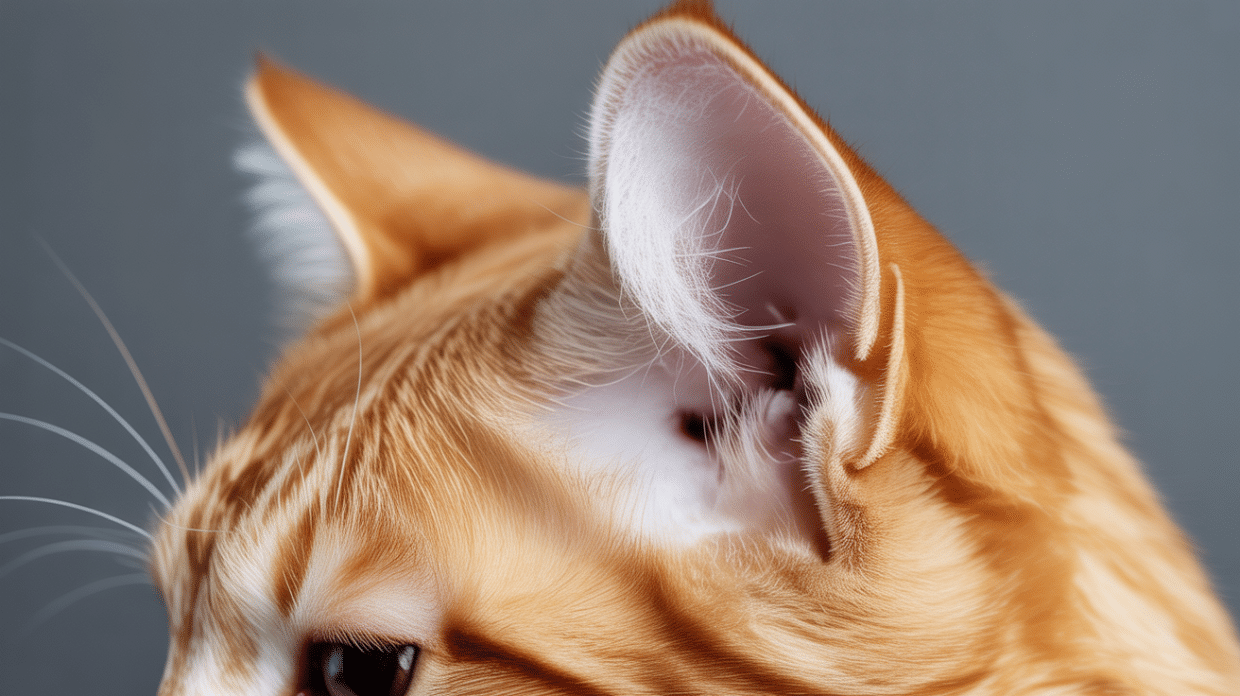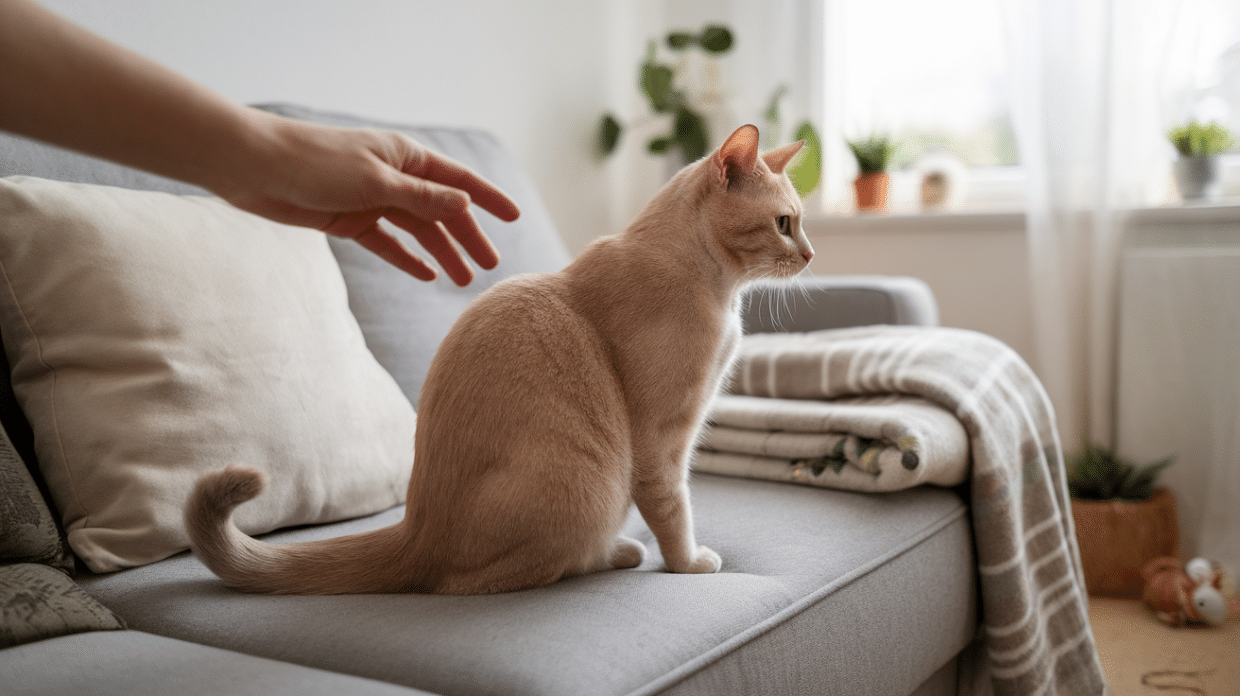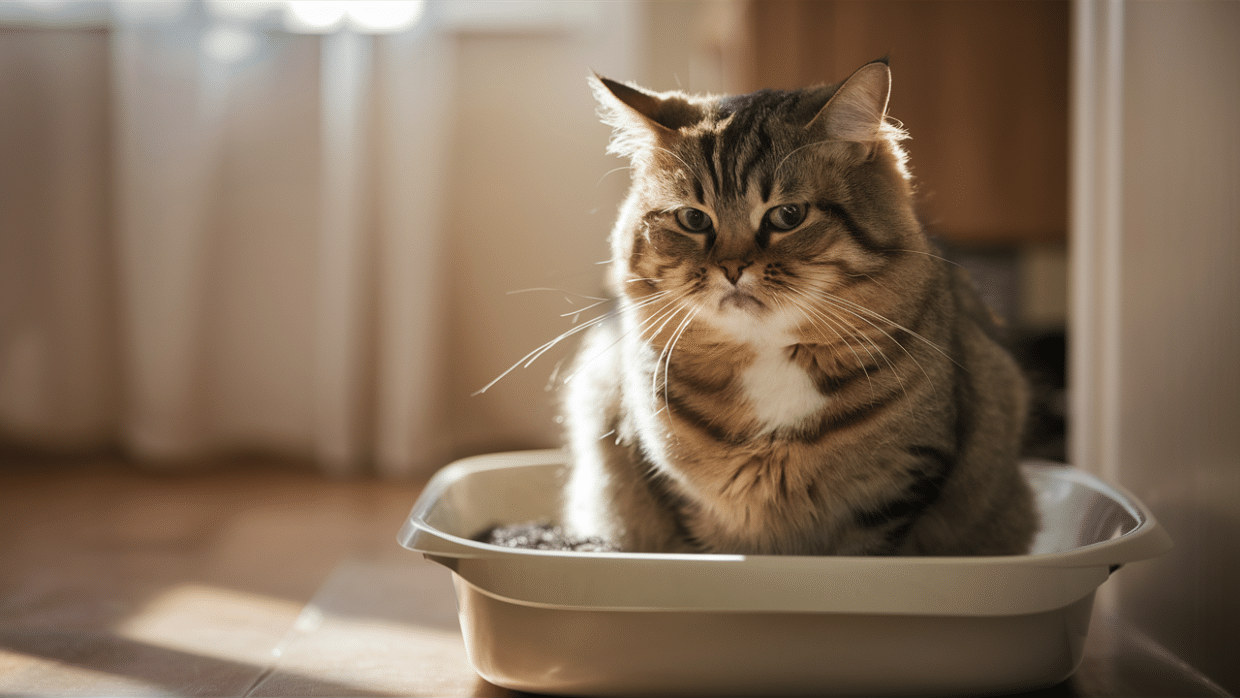I still recall the first time I noticed my cat breathing more rapidly than usual. She looked fine, calm, alert, and even playful, but her sides were moving quickly, and it made me pause.
If you’ve been through that moment of wondering what’s going on, you’re not alone. Fast breathing doesn’t always mean something serious, but it’s something you’ll want to understand and track.
In this guide, I’ll walk you through what I’ve learned, why it might happen, when to call your vet, and how to check your cat’s breathing rate at home.
You’ll also find tips on identifying common conditions and how to help your cat stay comfortable.
Why is My Cat Breathing Fast?
If your cat is breathing fast but acting normal in every other way, it might not be an emergency, but it’s still worth paying close attention to.
Rapid breathing can happen after play, stress, or heat exposure. Some cats breathe quickly when resting, especially after running or climbing.
However, if the fast breathing continues while your cat is calm and relaxed, it could point to something deeper, like mild pain, heart changes, or even hidden lung issues.
Watch for added signs like coughing, mouth breathing, or changes in appetite. Even if your cat seems okay otherwise, it’s smart to call your vet and ask if a check-up is needed.
Medical Causes to Watch For
Fast breathing or an open mouth during rest might seem harmless, but medical issues could be the cause. Some conditions develop slowly and show only subtle signs.
Knowing what to look for can help you catch problems early. Below are common health concerns that may cause changes in your cat’s breathing patterns.
1. Respiratory Infections
Respiratory infections are common in cats and can lead to fast or noisy breathing. You might notice sneezing, nasal discharge, or wheezing as the illness progresses.
Viruses or bacteria often cause these infections and can spread quickly, especially in multi-cat homes.
If your cat sounds congested or breathes with effort, it’s time to visit the vet. Prompt care helps prevent the infection from reaching the lungs or causing further problems.
2. Asthma in Cats
Feline asthma can cause episodes of rapid breathing, coughing, or even open-mouth breathing. During attacks, some cats crouch low with their necks stretched out.
Triggers include dust, pollen, or household sprays. Asthma is usually long-term and may come and go.
If your cat has frequent breathing issues but seems fine in between, asthma could be the cause. With treatment, most cats with asthma can live full, active lives.
3. Heart Disease
Heart disease often begins with small, quiet symptoms. Fast breathing, fatigue, and mild coughing are early signs. You may also notice fluid buildup around the belly area.
Some cats hide their discomfort well, so it’s easy to miss. If your cat seems tired or breathes faster at rest, have the vet check for heart-related problems.
Early diagnosis can lead to better outcomes with the right care and medication.
4. Anemia
Anemia happens when your cat doesn’t have enough red blood cells to carry oxygen. You might see pale gums, tired behavior, or a sudden drop in activity.
Breathing can speed up as your cat tries to get more oxygen. This condition can be caused by poor diet, parasites, or other illnesses.
A blood test is needed to confirm it. Treating the root cause can help restore normal energy and breathing patterns.
5. Pain or Injury
Cats hide pain well, so a fast breathing rate may be one of the first signs you’ll see. If your cat has suffered a fall, bump, or hidden trauma, they might breathe faster to cope.
Look for limping, changes in posture, or hiding more than usual. These clues often go unnoticed unless you’re paying close attention.
Don’t ignore sudden behavior changes—even subtle ones could point to something serious.
6. Tumors or Internal Growths
In older cats, tumors inside the chest or abdomen can press on organs and affect breathing. These may grow slowly and show few signs at first.
Over time, you might see weight loss, lower energy, or appetite changes. If your cat is breathing faster and nothing else seems wrong, internal growths could be part of the problem.
A vet exam and imaging can help find and confirm the issue early on.
Breathing Fast While Sleeping or Resting
Cats sometimes breathe faster when they sleep or rest, but it’s important to know when it’s a concern. During deep sleep, muscle movements and breathing patterns can change slightly.
However, if your cat is breathing rapidly while completely still or relaxed, it could point to something more serious.
Fast breathing while resting may be linked to stress, heat, or hidden illness. Watch for shallow breaths, chest or belly movements that seem strained, or more than 30 breaths per minute.
These signs may not always mean an emergency, but they shouldn’t be ignored. Monitoring these patterns can help you catch problems before they get worse.
How to Measure Your Cat’s Breathing Rate
Measuring your cat’s breathing rate is a simple way to spot early signs of trouble. It’s best done while your cat is calm and resting.
Knowing what’s normal can help you catch changes quickly. If the rate seems off, it’s worth checking again and contacting your vet if needed.
Steps to Follow:
- Wait until your cat is resting quietly, not after playing or eating.
- Watch the chest closely, one rise and one fall equals one breath.
- Set a timer for 30 seconds and count the number of breaths.
- Double that number to get the breaths per minute.
- A normal resting rate is 20 to 30 breaths per minute.
- Write down the number and time you measured it.
- Repeat the check at different times if you’re unsure.
- Keep a log for a few days to help your vet see any patterns.
When the Rate is Too High
If your cat’s resting breathing rate is over 30 breaths per minute and stays high, it’s time to take action.
Other warning signs include open-mouth breathing, panting, labored breathing, or a change in gum color.
Call your vet if you see any of these signs, especially if your cat also seems tired, withdrawn, or less hungry than usual.
When to Seek Veterinary Help
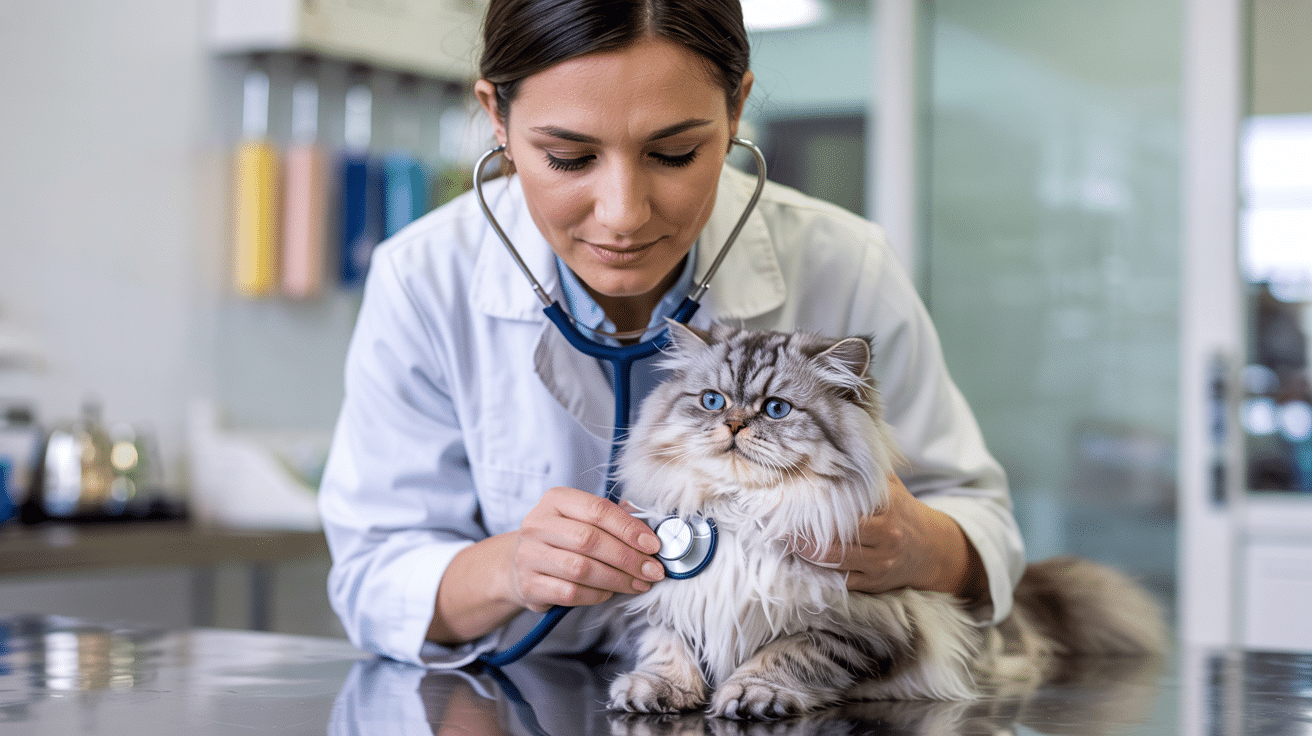
Sometimes, fast breathing is no big deal. Other times, it’s a sign that something serious is going on. Knowing when to get help can make a big difference.
If the symptoms are sudden, severe, or getting worse, don’t wait. Quick action may help your cat avoid more serious problems.
Signs That Warrant Immediate Attention
- If your cat is panting or breathing with an open mouth, call the vet right away. Cats don’t pant like dogs, so this is always a serious sign.
- Sudden collapse or weakness could point to heart failure, shock, or another emergency.
- If your cat is struggling to breathe or looks panicked, don’t wait. Fast care can be life-saving.
- Noisy, shallow, or labored breathing that doesn’t go away quickly is a reason to seek help.
- Pale or blue gums may mean your cat isn’t getting enough oxygen and needs urgent care.
- If your cat seems unusually still, weak, or unresponsive while breathing fast, contact your vet immediately.
Ongoing or Worsening Symptoms
Breathing that stays fast or gets worse over time should never be ignored. If your cat also seems tired, doesn’t want to eat, or starts coughing, these could point to a more serious health issue.
Pay attention to how your cat behaves between episodes. If you notice a steady decline or the same symptoms return often, it’s time for a vet visit.
Waiting too long can make treatment harder and recovery slower. Even if your cat acts normal sometimes, these signs still need attention.
Can I Help My Cat at Home?
You can support your cat at home, especially if the vet has ruled out emergencies or given you a clear diagnosis. Focus on keeping your cat’s environment calm and safe.
Track symptoms closely, follow care instructions, and act quickly if anything changes. Good home care can make a real difference in recovery and comfort.
Short-Term Monitoring
If your cat is breathing fast but doesn’t show serious symptoms, you can try easing the situation at home by making sure the room is cool and quiet.
Limit excitement, loud noises, and handling. Let your cat rest in a cozy, stress-free space. Watch their chest movements and breathing rate without disturbing them.
Write down what you see, including the number of breaths and any behavior changes. This will be useful if you contact the vet later. If anything seems worse or off, don’t wait, call for help.
Long-Term Care After Diagnosis
Once a vet confirms the cause, your cat may need daily support. If asthma is the issue, you might be asked to use inhalers through a special mask.
Heart problems may require pills or liquid medicine to control fluid or strengthen the heart. Your vet may also suggest changes in diet or activity level to help ease symptoms.
Keep track of medicine doses, behavior shifts, and follow-up appointments. Setting up a calm routine at home can help your cat feel better and avoid future flare-ups.
Conclusion
If you’re keeping an eye on your cat’s breathing and trying to figure out what’s normal, you’re doing the right thing.
Not every fast breath is a sign of trouble, but when something feels different, it’s worth paying attention.
You now have steps to follow for checking their rate, knowing what signs to write down, and what to expect from your vet if something more serious is going on.
The sooner you notice, the more you can help your cat stay safe and supported. Every calm moment you create, every note you track—it all adds up to better care.
Read more about your cat’s health and how to take care of your cat in other blogs.

